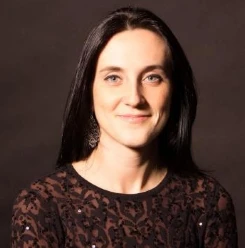C. Hui1, E. A. Simiele2, I. O. Romero3, Z. Yang4, M. S. Binkley4, R. T. Hoppe4, S. M. Hiniker4, and N. Kovalchuk5; 1University of California - Irvine, Irvine, CA, 2University of Alabama Birmingham School of Medicine, Birmingham, AL, 3Stanford University School of Medicine, Palo Alto, CA, 4Department of Radiation Oncology, Stanford University School of Medicine, Stanford, CA, 5Department of Radiation Oncology, Stanford University, Stanford, CA
Purpose/Objective(s):
Total body irradiation (TBI) is an integral component of conditioning regimens for patients undergoing hematopoietic stem cell transplantation. Implementation of volumetric modulated arc therapy (VMAT-TBI) has led to decreased treatment-related toxicities compared to 2D-TBI. VMAT total marrow and lymphoid irradiation (VMAT-TMLI) may allow for additional normal tissue sparing, and we aimed to conduct a dosimetric feasibility study comparing VMAT-TMLI and VMAT-TBI using in-house developed and publicly shared auto-contouring and auto-planning scripts.
Materials/Methods:
Forty patients previously treated with VMAT-TBI were used to create an AI model to delineate contours for the lymph nodes, bones in the trunk, and bones in extremities. Ten additional patients, previously treated with VMAT-TBI on C-arm linac, were selected for testing target auto-contouring using the Dice Similarity Coefficient (DSC) and 95% Hausdorff Distance (HD95), and VMAT-TMLI planning. Five plans were prescribed to a myeloablative regimen (12 Gy), and five to a non-myeloablative regimen (2 Gy). Differences in dose volume histogram metrics for the two cohorts were analyzed and reported.
Results:
The auto-contouring model demonstrated robust performance for all targets (average DSC: 0.89 ± 0.03; average HD95: 3.38 ± 1.46).
Both VMAT-TBI and VMAT-TMLI plans used the same number of isocenters, although TMLI plans required an average of two additional fields to account for increased target complexity.
For the myeloablative VMAT-TMLI cohort, in addition to sparing Dmean to lungs (62.4% of prescription), kidneys (57.9%), lenses (29.7%), other organs at risk were spared, including heart (52.3%), liver (61.2%), oral cavity (30.5%), parotids (51.9%), and ovaries (51.0%). For the non-myeloablative VMAT-TMLI cohort, in addition to sparing Dmean to lungs (56.0% of prescription), kidneys (58.5%), lenses (31.1%), brain (68.2%), thyroid (52.5%), ovaries (38.8%) and testes (27.5%), other organs at risk were spared including heart (53.3%), liver (55.7%), oral cavity (21.6%), parotids (50.9%), and bowel (66.9%). For all prescription regimens, compared to the VMAT-TBI cohort, the largest gains in sparing Dmean were found for oral cavity (-75.0±5.3%), lenses (-67.7±4.1%), ovaries (-58.4±12.8%), submandibular glands (-57.4±3.3%), parotids (-50.8±3.5%), eyes (-49.6±16.1%), rectum (-45.2±4.6%), bladder (-45.0±7.4%), liver (-43.5±5.2%), stomach (-43.5±6.4%), and heart (-43.3±10.2%).
Conclusion:
Our findings indicate that VMAT-TMLI, supported by in-house developed auto-contouring and auto-planning scripts, is dosimetrically feasible and achieves substantial normal tissue sparing compared with VMAT-TBI. The marked improvements in normal tissue sparing suggest a potential for reducing treatment-related toxicities. Further clinical evaluation is warranted to confirm these findings and assess the impact on patient outcomes.

